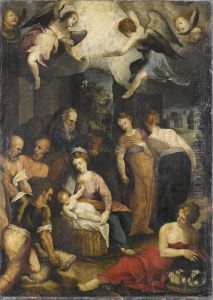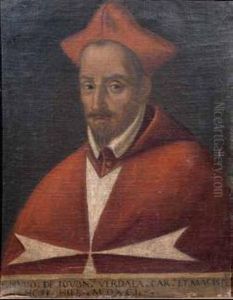Filippo Paladini Paintings
Filippo Paladini was an Italian painter born in Florence in 1544. He was part of the late Mannerist period, which was characterized by artificiality, grace, and elegance that often prioritized style over substance. Paladini's works included religious themes, portraits, and mythological subjects, and he was influenced by the style of his Florentine contemporaries and predecessors.
Little is known about Paladini's early life and training. It is presumed that he was trained in Florence, which was a significant center for the arts during the Renaissance and Mannerist periods. There, he would have been exposed to the works of great masters such as Michelangelo, Andrea del Sarto, and Jacopo Pontormo, which likely influenced his style and technique.
In his mature career, Paladini worked in various Italian cities, including Florence, Rome, and Lucca. His work gained recognition for its vivid colors and dynamic compositions. One of his notable works is 'The Martyrdom of St. Agatha,' which displays his ability to capture emotional intensity and drama, and is now housed at the Palazzo Pitti in Florence.
Paladini's career also took him to Sicily, where he was active in the city of Palermo. His Sicilian period was significant, as he contributed to the development of the local school of painting. In Palermo, his work was marked by a blend of Mannerist complexity and a growing interest in naturalism, which would later become prominent in the Baroque period.
Filippo Paladini's death occurred in 1614. Though not as widely recognized today as some of his contemporaries, his work remains an important link in the chain of Italian art history, bridging the gap between the high Mannerism of the 16th century and the emerging naturalistic styles that would dominate the 17th century.

